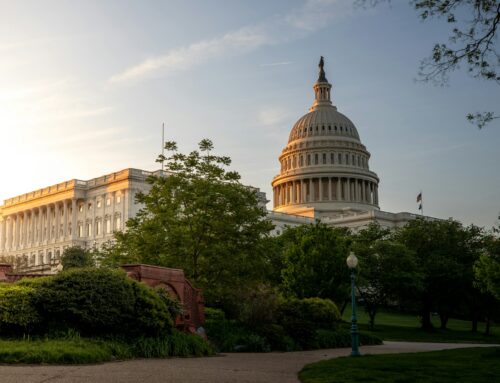No, we’re not talking about the continuing resolution that extended federal government funding at fiscal year 2016 levels through April 30th. The gift was what was supposed to come before the annual spending bills – the budget resolution. Because Congress didn’t adopt a budget resolution for fiscal year 2017 last year, the 115th Congress can enact both a budget resolution for FY2017 and a separate resolution for FY2018 this year.
This isn’t about doing extra work, it’s about getting what can come with the budget resolution — budget reconciliation. The budget resolution can direct authorizing committees to come up with a certain amount of revenue or mandatory spending changes which would be cobbled together in a later “reconciliation” package. Reconciliation given expedited consideration in the Senate is not subject to the filibuster and only needs a simple majority to pass. Passing both a FY2017 and a FY2018 budget resolution gives Congress two bites at the reconciliation apple in one year.
The ball is already rolling in the Senate and the FY2017 budget resolution will likely be voted on next week after it cleared a procedural hurdle Wednesday. The target for this bite of the reconciliation apple? Repealing the Affordable Care Act; aka Obamacare. To move the package quickly, Senate Republicans used the budget figures envisioned in the Bipartisan Budget Act of 2015 and the Budget Control Act of 2011. Unfortunately, those numbers add up to larger deficits and debt than envisioned in the President’s budget request for FY2017.
Senate leadership argues that the FY2017 budget resolution is a meaningless vehicle to get to reconciliation and to the repeal of Obamacare. They claim that the real budget that demonstrates fiscal responsibility will be the FY2018 budget resolution that will be debated in the spring. Senate Majority Whip John Cornyn (R-TX) said as much, “It’ll be a budget framework, yes, but it’s not going to be a real budget. It’ll be solely for the purpose of getting reconciliation instructions.” That may be the case, but in the interim here’s some scary numbers from the FY2017 budget resolution: a more than $1 trillion annual budget deficit in FY2026 and a more than $29 trillion national debt! The resolution envisions adding more than $9 trillion to the debt over the ten-year budget window. Compare that to the FY2016 budget resolution and the differences are startling. In that budget, Congress envisioned a nearly $300 billion surplus and a national debt of just over $21 trillion and falling!
Even the reconciliation instructions are a bit underwhelming. The provision that sets up repeal only requires $2 billion in savings over ten years, a relatively paltry sum. And it remains to be seen what they have planned for the replace portion of the promised repeal and replace.
Because neither of them controlled all the levers of power, in recent years both Republicans and Democrats were able to get away with passing fictitious budgets. This FY2017 budget resolution, being debated fully one fourth of the way through FY2017, is hopefully one last example of such budget nonsense. In the FY2018 budget resolution Congressional Republicans have the opportunity to and need to come up with a plan that is fiscally responsible, no more games and no more dancing away from reality.










Get Social